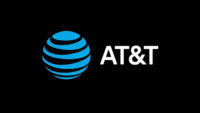AT&T Resists Plan to Bring High-Speed Fiber to Rural Homes
March 31, 2021
AT&T expressed opposition to the proposal of subsidized fiber-to-the-home for everyone in the U.S., with the argument that rural communities don’t need anything faster than the existing service’s 10Mbps upload speeds. AT&T executive vice president of federal regulatory relations Joan Marsh defined “broadband for the 21st Century” as its VDSL (very high-speed digital subscriber line), a 14-year-old system that uses copper telephone wires for the last mile to the home. She noted the “significant additional cost” to deploy fiber to every home, saying there is “no compelling reason” to justify the expense.
Ars Technica reports that the fiber-to-the-home deployment would bring “50Mbps download speeds with 10Mbps upload speeds or 100Mbps downloads with 20Mbps uploads.” AT&T also charged that “overbuilding … would needlessly devalue private investment and waste broadband-directed dollars.”

The broadband industry defines “overbuilding” as introducing an ISP in an area already served by another ISP — in other words, “broadband competition.” AT&T has stated that fiber technology is “future-proof” but also that bringing it to every home “is not practical.”
The Biden administration is preparing a $3 trillion package that “includes funding for rural broadband,” and, two weeks previously, “Congressional Democrats proposed an $80 billion fund to deploy broadband with download and upload speeds of 100Mbps to unserved areas.” Four U.S. senators also called for a “21st Century definition of high-speed broadband” of 100Mbps upstream and downstream.
Ars Technica notes that subsidizing “symmetrical 100Mbps speeds would help other ISPs bring fast broadband to areas where AT&T still uses old phone lines that have fallen into disrepair.” AT&T is deploying fiber to 3 million more homes and businesses, but only in metro areas where it already has infrastructure; “there are tens of millions of homes without fiber in AT&T’s 21-state wireline service area.”
AT&T has stated that “the FCC’s 6-year-old broadband definition of 25Mbps downstream and 3Mbps upstream is sufficient to support Zoom working and remote learning … [but admitted that] when Zooming, streaming, and tweeting is combined in an average household of four, it’s easy to conclude that download speeds must increase.”
The telco’s current “fixed-wireless service only provides download speeds of 10 to 25Mbps and upload speeds of 1Mbps” but it is planning upgrades so that it might “qualify for the proposed $80 billion fund if Congress doesn’t require high upload speeds.”

No Comments Yet
You can be the first to comment!
Sorry, comments for this entry are closed at this time.